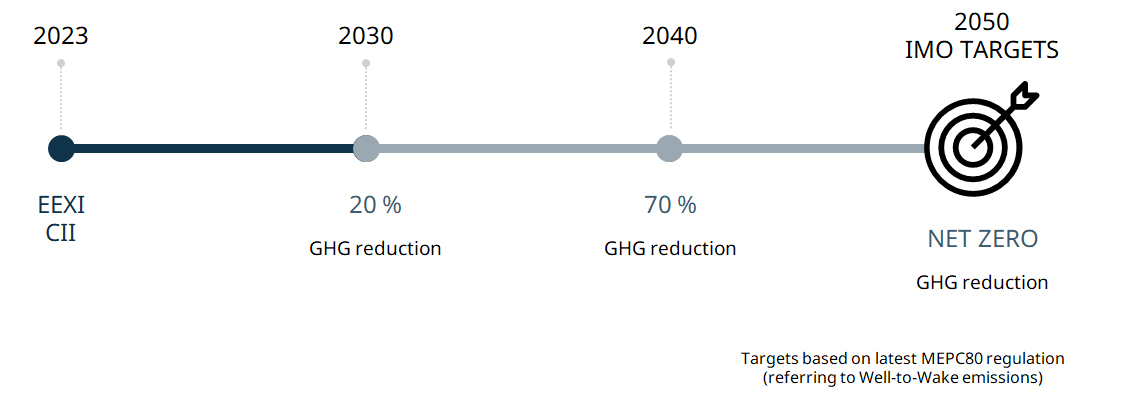

Establishing an optimal decarbonisation path for your fleet
With the entry into force of IMO’s energy efficiency regulations approaching, it is no surprise that compliance with Energy Efficiency Index for Existing Ships (EEXI) and Carbon Intensity Indicator (CII) are dominating discussions in shipping. For fleet owners, knowing when and how to adapt will become critical for maximising the value generation and useful life of their assets.

Watch this video to learn how Princess Cruises discovered the best way to decarbonise their fleet with the help of Wärtsilä Decarbonisation Services.
Reduce emissions with data-led advice
At Wärtsilä, we understand that decarbonising maritime is no simple task. The challenge lies in selecting and employing the right solutions and technologies efficiently, economically, and at the right times. With Decarbonisation Services we help you to find your decarbonisation path with three simple steps:
- Analysis of the current fleet
- Modelling and data analysis
- Selecting the right solutions

At Carnival Corporation we are totally committed to decarbonising our operations. A systematic, data-driven approach is essential. By working closely with Wärtsilä, a company with a depth of experience and expertise, we can establish a model that will allow us to get it right first time.
Find the best way to adopt alternative fuels for your vessel fleet
Are you thinking about adopting future fuels for your vessels but unsure how to start? Perhaps you need to know whether to convert your existing vessel to run on alternative fuels, or to invest in a newbuild.
For an existing vessel, the study outlines the modifications needed to accommodate engines capable of combusting your future fuel of choice as well as the related fuel storage and auxiliary systems. The study includes preliminary engineering drawings for the layout of the key equipment needed and key piping diagrams as well as a written report providing valuable high-level information on the conversion.
What does a feasibility study include?
- Engine conversion plan
- Recommended solutions for fuel storage onboard
- Estimated structural modifications for the vessel
- High-level weight change calculations
- Automation and control system modifications
- Operational comparisons of using alternative fuel vs diesel
- A preliminary high-level cost estimate and project schedule
- Risk assessment.
Interested in learning how sustainable fuels could work for your vessel or fleet? Complete this form and a Wärtsilä expert will get in touch with you to start the discussion.












